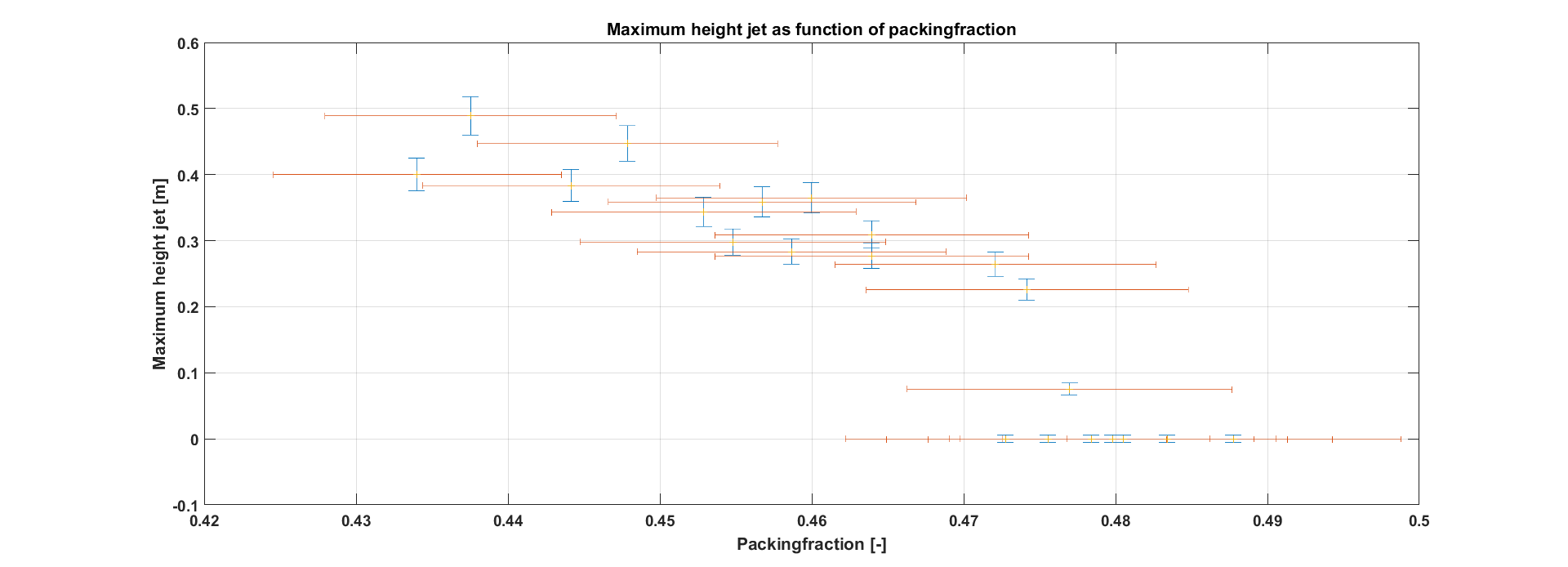First the amount of airflow through the tube, and so the packing fraction, is varied. With the packing fraction as the variable, the height of the jet as function of the packing fraction is measured.
In the movie on the right, two of the measurements are displayed simultaneously. It can be clearly seen that the packing fraction on the left does not result in a jet and that the packing fraction of the video on the right does. For all measurements, the packing fraction is determined and the height is measured, which is plotted in the graph below.

Second, a fixed amount of airflow is used which results in a stable packing fraction, and the height from which the ball is dropped is varied. This resulted in an alternating impact velocity. With this impact velocity as the variable, the height of the arising jet is measured again, for all different impact velocities.
In the movie to the left, two of the measurements are displayed simultaneously. It can clearly be seen that in the video on the left, with a lower impact velocity a smaller jet occurs than in the video on the right, with a much larger impact velocity. For all measurements, the impact velocity and the height of the jet are determined, which are plotted in the graph below.
